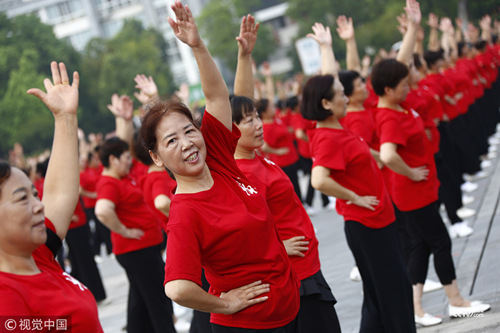Full coverage: China's reform and opening-up, 40 years on
By Tom McGregor, CCTV.com Panview commentator and copyeditor
Editor's note: 2018 marks the 40th anniversary of China's 'reform and opening up' that opened the doors for a more prosperous China that helped hundreds of millions of Chinese citizens escape poverty as the nation had enjoyed rapid economic growth and development. CCTV.com takes a closer look at Beijing's comprehensive reforms with a series of special reports focusing on various fields where tremendous changes have taken place ever since the introduction of the policy.

When the late Chinese leader Deng Xiaoping launched the reform and opening policy, Beijing's primary goal at the beginning was to jumpstart the domestic economy in order to provide opportunities for all Chinese citizens to enjoy greater prosperity if they are willing to work hard and take risks. By encouraging the Chinese to earn more money, that could transform the nation for the better.
When the reform and opening up policy was introduced at the Third Plenary Session of the 11th Central Committee of the Communist Party of China (CPC) in December 1978, China was deeply mired with overwhelming poverty.
Yet China had enjoyed amazing success in the past four decades to emerge as one of the global leaders in average annual GDP (gross domestic product) growth rates alongside its rapid development, the Chinese witnessing soaring incomes, receiving better jobs prospects, as well as seeing the dramatic rise of urbanization, modernization and industrialization nationwide.
In 1978, nearly all Chinese citizens were struggling with poverty, but for today’s new China in 2018, many Chinese have joined the ranks of the Middle Class, while over 800 million Chinese have risen above abject poverty and can save money for the future.
Nevertheless, the sky-high GDP annual growth rates came at high costs to Chinese society, which had led to a rising income inequality gap, unbalanced regional development, social ills, such as crime and corruption, rampant pollution, poor food and drugs safety inspections and dreary labor conditions inside most factories.
Efforts to boost wealth among all Chinese had led to a culture of greed and exploitation, but when Beijing had concluded that the rapid mode of development was no longer the right solution to achieve improved living standards for all Chinese citizens, government officials had shifted policy direction and introduced more reform and opening up that called for sustainable development rather than rapid economic growth.
In recent years, the Chinese government has touted the "New Normal" in efforts to balance economic growth with high-quality, not high-quantitative growth, in which social welfare plays a larger role in Chinese society along with the stricter enforcement of business regulations to curtail corruption, improve food and drugs safety and curb pollution.
But this is nothing new. At the Fourth Session for the 8th National People’s Congress (NPC) in March 1996, the Chinese leadership formally declared its call for pursuing sustainable development for the the nation as a whole.
However, all such policies were not implemented overnight but phased slowly after many years by adapting to changing economic and social conditions in the country. There has been good reasons for the ‘go slow’ approach.
Let’s say Beijing had decided to enforce tougher regulations on Chinese businesses in a sweeping manner. Well that could have sparked a major economic depression since the Chinese required more time to adjust and learn how to abide by stricter laws on all business matters.
Hence when Xi Jinping was elected Chinese President by the NPC in 2013, Chinese citizens were better prepared to accept sweeping reforms as Xi declared bold plans to crackdown on corruption, lower pollution levels, shut down high-polluting factories, enforce stricter supervision of food and drugs safety, as well as open up the domestic economy to a more globalized vision, which welcome foreign companies to play a bigger part in China’s finance and insurance sectors.
The lesson learned from Xi’s continuation of reform and opening up policy underscores the necessity to introduce new measures not with haste, but when the time is ripe for them.
To push ahead on reform and opening up is based on educating the public over the benefits of marching ahead alongside with the government to develop a brighter future for China. Some reforms can be implemented quickly while other opening up policies may take a longer time for implementation. The reform and opening up policy works best when its measures are part of a gradual process, since sudden changes could lead to unexpected consequences for the public at large.
(The opinions expressed here do not necessarily reflect the opinions of Panview or CCTV.com. )

Panview offers a new window of understanding the world as well as China through the views, opinions, and analysis of experts. We also welcome outside submissions, so feel free to send in your own editorials to "globalopinion@vip.cntv.cn" for consideration.
















